I like words and plants and other stuff, feel free to have a look around. Ngunnawal & Ngambri country.Also posting about textiles at @fibrealchemy
Don't wanna be here? Send us removal request.
Text
Alkionides Meres
The wind stills, the sea smooths and settles. If you look closely you will see them: soft white eggs, on nests of fish bones.
You wouldn’t want the wind, the waves, to come and sweep them away, but it is almost too quiet. Days earlier you would have sworn the sky was ripping at the seams, that the sea would never stop its churning, that there would never be peace.
Now, in the blank stillness, you can hear a murmur of it: an echo of Alcyone’s tears for her husband – though the sea took Ceyx’s life, it delivered his body to the shore, to Alcyone. In turn, she gave herself to the sea in her despair. The gods took pity, and transformed her, transformed him.
You catch flashes, the blue and the orange of the kingfishers returning to the scene to lay their eggs, bringing the placid weather with them. It’s as if the air is too full of their grief to have room for the wind – these are the halcyon days, where the quiet caresses your skin like a lover, and you dream of storms and death.
28 notes
·
View notes
Photo






The Myth of Ceyx and Alcyone in Ovid’s Metamorphoses
translated by Brookes More // Parlington Hall marble bas relief // translated by A.S. Kline // Ceyx Et Alcyone by Charles-André van Loo // translated by Sir Samuel Garth, John Dryden, et al // Johann Benjamin Thomae
5 notes
·
View notes
Text

Lost At Sea, Ceyx, Alcyone ~ from "Favorite Greek Myths" retold by Mary Pope Osborne ~ illustrated by Troy Howell ~ CozyBookNook
120 notes
·
View notes
Photo







Halcyone ~ 1915 ~ Herbert James Draper (English artist, 1864-1920)
Halcyon, from Greek mythoogy: “The gods transformed starcrossed lovers, Alcyone and Ceyx, into halcyon birds (kingfishers). During seven days each year when Alcyone nested on the beach, the gods restrained the winds and waves. These became known as the “halcyon days”, when storms never occur.”
246 notes
·
View notes
Text
It's been, like, 30 years since my days as a Greek mythology girlie, so I admit that while I knew what the phrase 'halcyon days' meant, I didn't know the actual origin of the phrase, but I stumbled across it today:
from the Wikipedia entry on Alcyone and Ceyx:
Ovid and Hyginus both also make the metamorphosis the origin of the term "halcyon days", the seven days in winter when storms never occur. They state that these were originally the 14 days each year (seven days on either side of the shortest day of the year) during which Alcyone (as a kingfisher) laid her eggs and made her nest on the beach and during which her father Aeolus, god of the winds, restrained the winds and calmed the waves so she could do so in safety. Aeolus controls the wind and the bird couple can nurture their young nestlings. The phrase has since come to refer to any peaceful time. Its proper meaning, however, is that of a lucky break, or a bright interval set in the midst of adversity[.]
26 notes
·
View notes
Note
Sorry if you've already been asked this, but what are your favorite types of kingfishers?
No, no problem, this is one of my favorite groups of birds.
My absolute favorite king fisher is the tiny American Pygmy Kingfisher. Paxon and I used to take a canoe down this little creek in far eastern Ecuador, called Orchidea, where an APKF used to perch and feed on small fishes. We'd site and watch it for quite a long time.
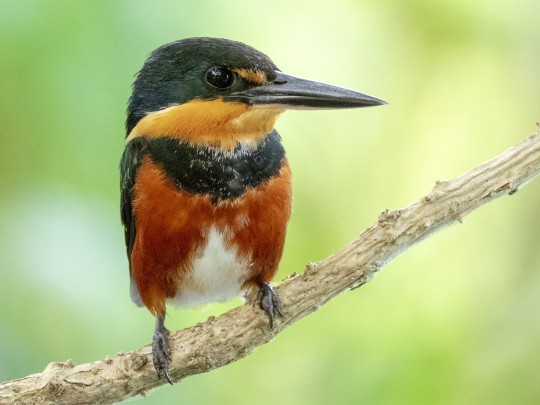

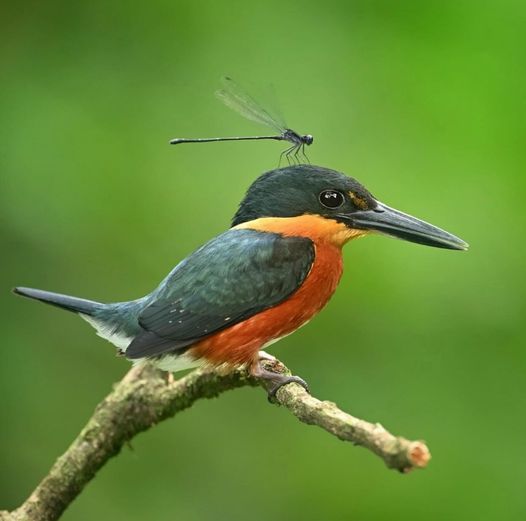
American Pygmy Kingfisher (Chloroceryle aenea), family Alcedinidae, order Coraciiformes, found in parts of Central and South America
photographs: John L. Crawley, Andes Vasquez Noboa
Here are some other favorites:
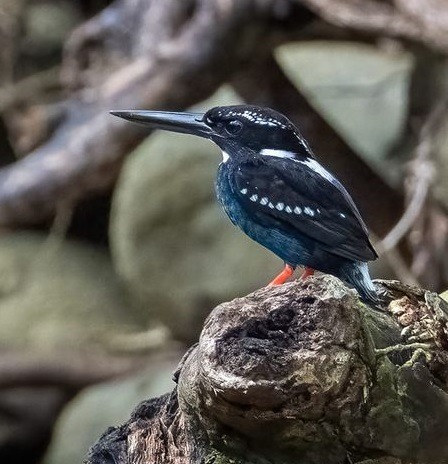
Silvery Kingfishers
Herps and Birds (and More) (Posts tagged ceyx) (tumblr.com)
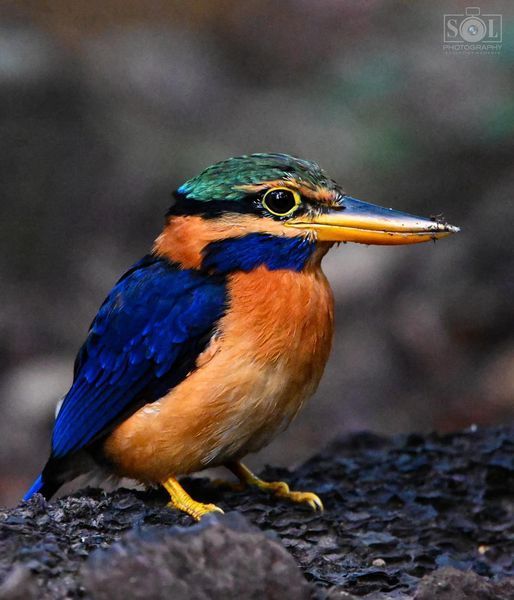
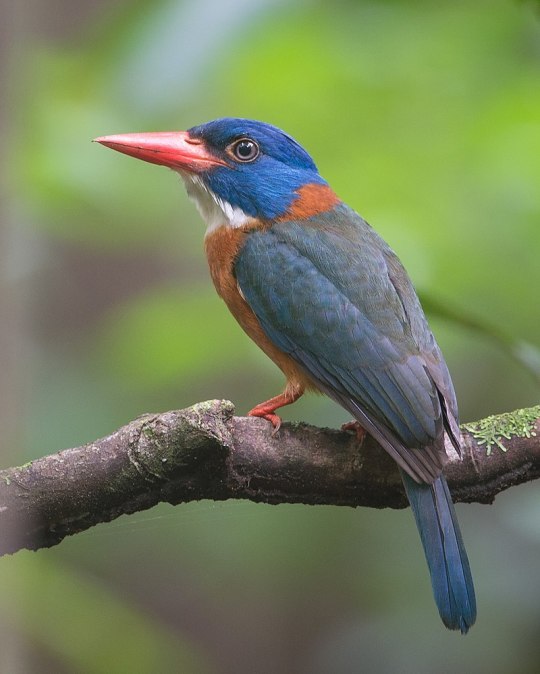

genus Actenoides
Herps and Birds (and More) (Posts tagged actenoides) (tumblr.com)
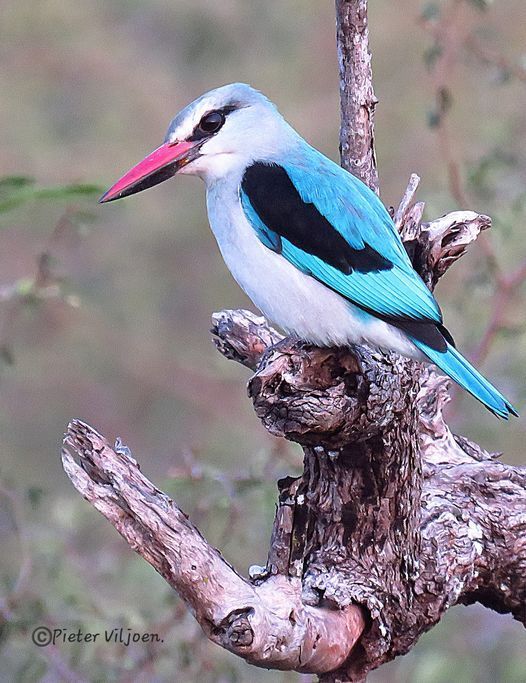


genus Halcyon
Herps and Birds (and More) (Posts tagged halcyon) (tumblr.com)
317 notes
·
View notes
Note
What exactly is the tale of Alcyone and Ceyx?
Alcyone was the daughter of Aeolus, the god of the winds, and Ceyx was the son of the Morning Star, Eosphorus. They were deeply in love and were married, living a happy life together. However, they used to often playfully call one another Zeus and Hera. This infuriated Zeus who regarded it a hubris (Ύβρις). Zeus waited for the proper time to punish the arrogant couple who dared to make themselves comparable to gods.
Tragically, a violent storm arose while Ceyx was at sea, and his ship was destroyed. He perished in the tempest. Back on land, Alcyone was unaware of her husband's fate but was plagued by terrible dreams and premonitions of his death. She prayed to the gods for his safe return.
Moved by her prayers, the gods decided to reveal the truth to Alcyone. They sent the goddess Iris to deliver the news of Ceyx's death. Devastated by the loss of her beloved husband, Alcyone was overcome with grief. In her despair, she rushed to the shore, where she saw Ceyx's lifeless body washed ashore.
The gods took pity on the couple's tragic love story and transformed them into birds. Alcyone became the kingfisher, and Ceyx became the halcyon bird. They were granted the ability to nest and mate on the sea for a short period of time, during which the seas remained calm and peaceful. This period became known as the "halcyon days," symbolizing a time of tranquility amidst the storms of life.
19 notes
·
View notes
Text
Ok Tumblr it's your Elder here to remind you that yes, the Northern Hemisphere nights are dark and the cold is getting into your bones and maybe you think everything's going to keep getting worse forever and you'll just get older and older until everyone and everything you love is dead: but you're only partly right.
Because yes sure we are all gonna die but in the meantime and maybe even because of that, there's joy. Even if it's only a bird half glimpsed from a moving vehicle, even if it's only the warmth in a cup of coffee, even if it's only the memory of someone who adored you as whole-chestedly and unconditionally as you deserve to be adored, joy is real in the world.
And tomorrow morning as I write this, the sun will shine along the passage at Newgrange and the sun daggers will frame the petroglyph in Chaco Canyon, and that is evidence that the long slow celestial mechanics of reversion to the mean will pull us inexorably back to springtime and the first green things growing out of the earth. The elders before me built these monuments to remind me to remind you that the sun will return.
And in the meantime let's hold hands in the dark. Let's tell the bleakest jokes we can think of at funerals to try and get the bereaved to laugh. Let's hug each other to coregulate our tender nervous systems that are trying so hard to keep us safe and alive. Let's watch how fast the efficiency of solar power is overtaking that of fossil fuels (effectively free energy by 2035: let's live to see it.) Let's revel in gods like pigeons and coyotes that can learn to coexist with humans.
Let's remember that there are more ordinary people of goodwill than we can possibly imagine: people who observe stop signs and pull over to let fire engines pass and who pay their fucking taxes and never cross pocket lines: normal working people who are kind to animals and who love all children and who feel solidarity across race and class and gender lines. Let's be those people and raise our children of blood and choice to be those people, the infrastructure of the world, the sunbeams shining into the dark.
565 notes
·
View notes
Text

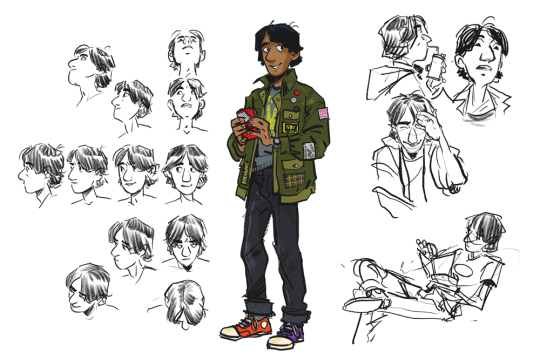




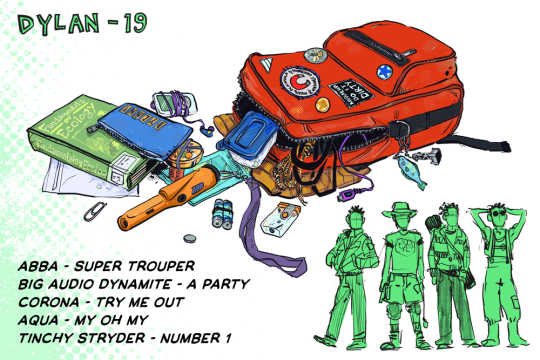


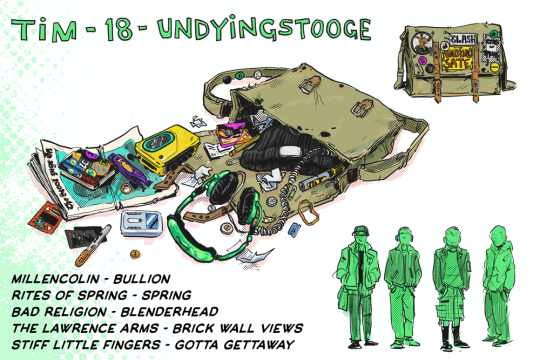


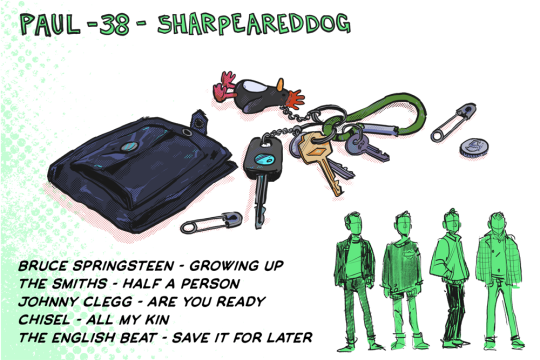


I’ve been working slowly on art for a graphic novel pitch. It’s currently called Cratediggers and it’s about three highschool friends in their first year of university in London in 2012. They’ve spent their teenage years looking for a rumoured bootleg of their favourite band’s final show, and a new lead pops up. Isaac, the main character, has been happily existing in the middle ground between the stronger personalities of his two best friends for years. Julia’s flourishing in university, she knows where she wants to go and she’s loving meeting new people - like Dylan. Tim’s really struggling, both with change and herself. They belong to an online forum for fans of the defunct 80s punk band Undying Spite, where they meet the much older Paul.
It’s about dealing with changes (in yourself, in others, in life), making decisions on where to go next, and music.
I wrote the script a few years ago, it's about 330 pages and full of niche references. I hope I get to draw it - I may never get through all the scripts I've written, but I'll try. I write a lot.
287 notes
·
View notes
Text




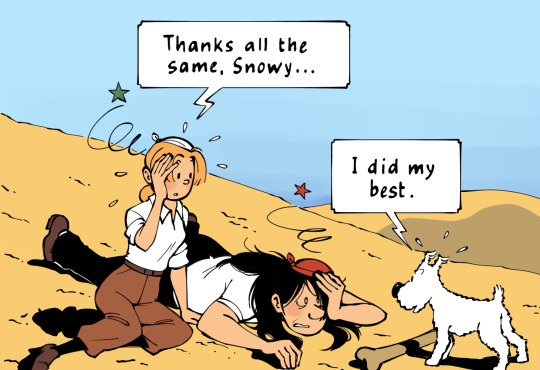
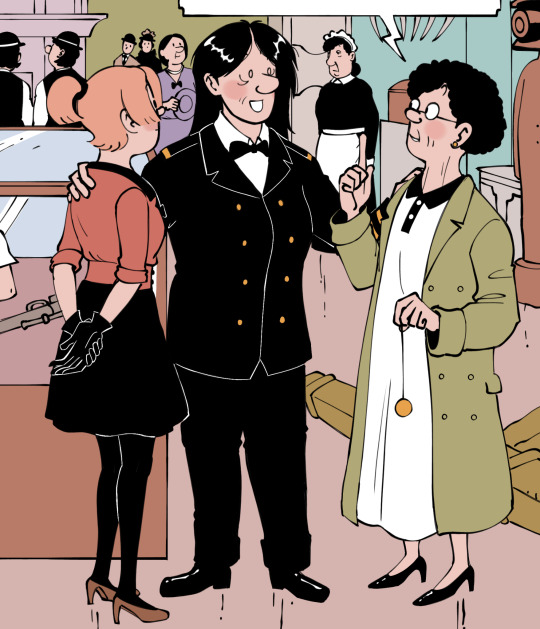
Alternative universe
9K notes
·
View notes
Text
If you answer I'm also curious about which you personally prefer vs how you answered, I'm too tired to make all the options but
#look#look i voted fantasy both times because im a fantasy person#but then i remembered how beloved star trek is by how many people
7 notes
·
View notes
Text
yesterday in economic botany we were learning about plant based oil compounds and stuff and my botany professor was talking about lynn seed oil, which in woodworking is rubbed on over furniture as a varnish. this oil has an exothermic chemical reaction with oxygen, meaning that the reaction creates heat. what often happens, apparently, is that woodworkers will finish rubbing on the oil with a rag and then will ball up the rag and throw it away, but because the reaction is taking place and the heat can’t escape (like it would on a piece of furniture where it can be cooled) it gets trapped in the rag, which gets hotter and hotter until it reaches the temperature where it bursts into flame. apparently many woodworking shops have been burned down by this. the proper way to dispose of rags with this oil is to hang them up on a clothesline, so again the reaction never gets enough heat to start a fire. im telling you this because im a writer and ive never heard of substance that will just…spontaneously combust conveniently like that so long as it’s in a confined space. my botany professor tried it in a trash can in his driveway and it did indeed burst into flame after 45 minutes, which is an exceptionally convenient time delay. im sorry im tying this so fast my laptop is on 2% battery and theres no outlet an
67K notes
·
View notes
Text

(puts all the Saint of Steel's paladins in my pocket and rattles them around)
just finished all four currently existing Saint of Steel books and I keep thinking about all these guys
2K notes
·
View notes
Text
It's been years since I started seeing nutrient flows constantly in my daily life, and the more I study agriculture, the more I see them.
See, every time you harvest something, you take the nutrients in that item away from the soil, and they go somewhere else. When I put a banana peel in my compost bin, I think (a little gleefully) about how I've just added an exotic, different profile of nutrients to my own property--but I also think about that distant banana plantation that lost tons of nutrients per year to US grocery stores, and I wonder what they replaced those nutrients with.
The farmer across my field grows corn, which gets harvested for feed. Corn is a nitrogen-hungry crop. Every year, that corn sucks up nutrients, which get harvested and shipped away. The farmer, being a conventional farmer, mostly replaces those with a conventional fertilizer. Nitrogen is often applied to fields in the form of ammonia fertilizer, which is made via a process that binds nitrogen in the air with hydrogen from natural gas. This feels like a vast resource, but of course we know it's not inexhaustible and not without cost.
Ideally, said farmer does soil tests and applies a carefully considered amount of ammonia. It is taken up by the growing plants and relatively little is lost. Possibly (often), though, some of the ammonia is leached out via rain and ends up in waterways, where it causes plant overgrowth and algal blooms, which harm the waterways in several ways, and turn those nutrients from a resource into a contaminant.
Meanwhile, the corn is also uptaking a variety of other nutrients from the soil which the commercial fertilizer is NOT replacing. Year by year, those nutrients get shipped off to distant feedlots and depleted in the soil. Eventually, those nutrients are gone from my neighbor's field and, quite possibly, languishing in a manure lagoon somewhere in, say, Indiana, where one can only hope it's properly treated and made into compost. But, you know. Not necessarily.
When I buy compost at the store, it's usually based in either cow manure or "forest products". Hopefully, depending on brand, those forest products MIGHT be collected municipal yard waste. Which is pretty good. Those suburbanites don't want their leaves, I do, win/win.
Except that because those suburbanites raked their yard waste, they now need at some point to fertilize their trees, shrubs, and turf grass. Meanwhile, they've eliminated habitat for the many insects that use leaf litter to either overwinter or reproduce. They may not be counting the costs, but the costs don't stop existing.
The ebb and flow of nutrients is something that, in the current system, goes utterly unregarded by most of the people taking part in the process. Even gardeners bring nutrients onto their soils mostly without thinking about the places those nutrients came from. I think in a sustainable world, that needs to change.
Also probably we need to do a hell of a lot more cover-cropping.
6K notes
·
View notes
Text
They’ve been rebuilding the Tower of Babel, but this time they have a team of linguists on site. Every time God smites the builders and invents a dozen new languages, the linguists have a dozen decently sized translations in about a month and work can start up again.
The linguists have been really into it. They say the new phonemes are fascinating. As for God, I assume that at this point he’s just curious to see how far this goes.
66K notes
·
View notes

